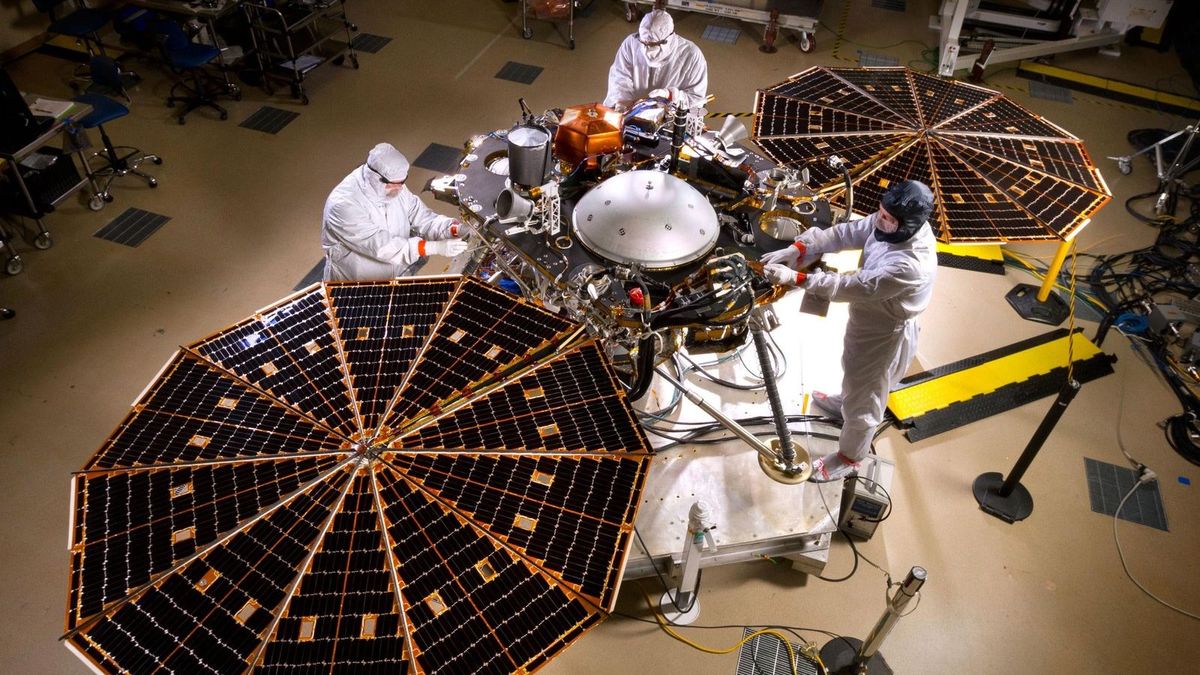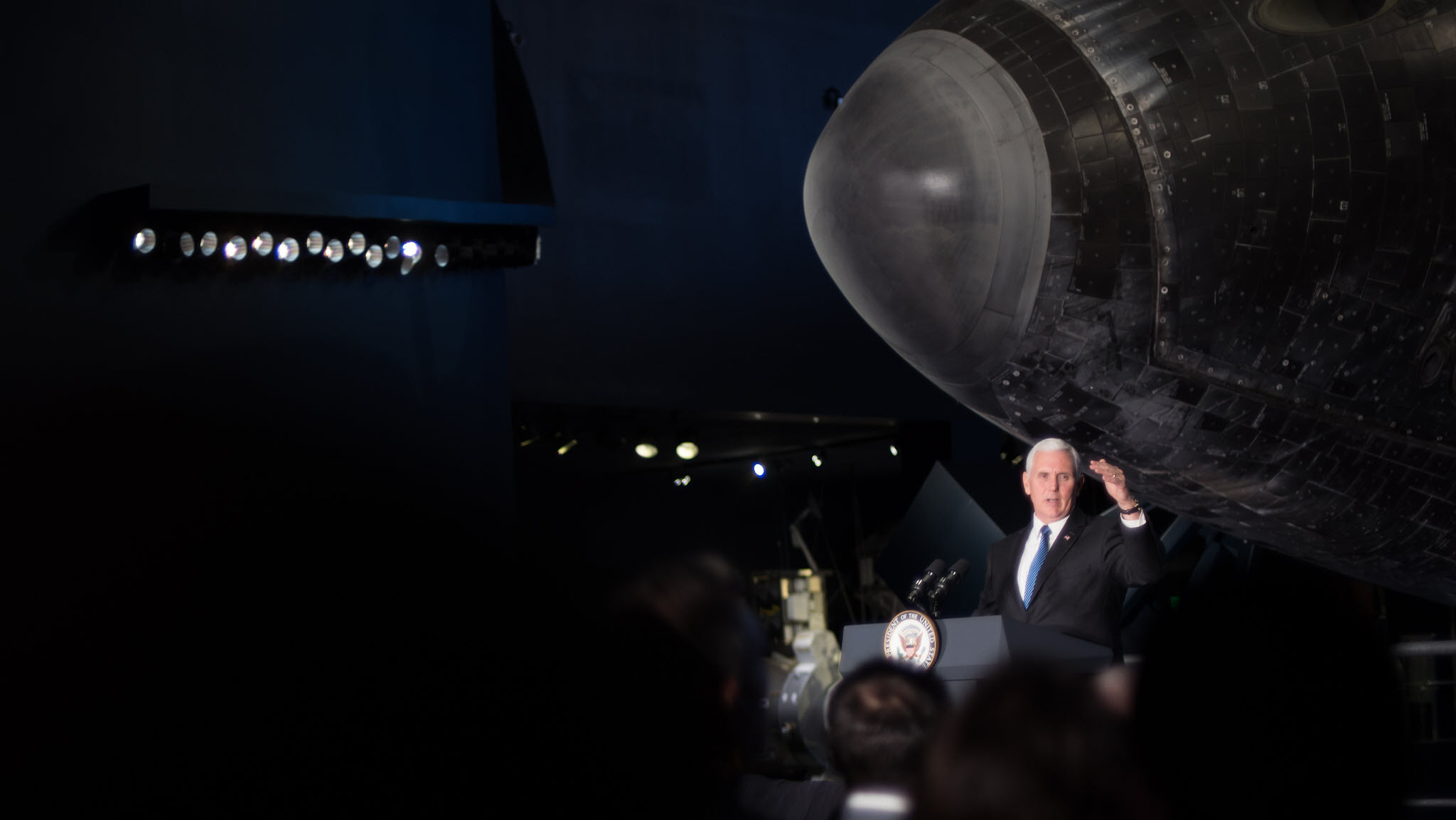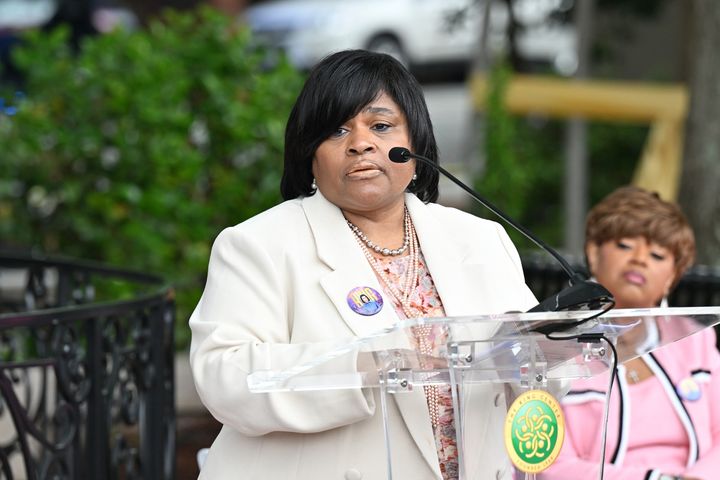Here Are the Industry Reps Pushing Corporate Interests in Space
The panel created to advise the President on space policy is packed with individuals tied to the defense industry.

This story was authored by science and tech reporter Lynne Peskoe-Yang.
When President Trump revived the National Space Council in 2017, he reinstated its powerful governing body: the Users’ Advisory Group. Led by Vice President Pence and stacked with industry heads, defense contractors, and conservative donors, the UAG fights for its members’ rights to profit from conducting business in Earth’s orbit.
The National Space Council (NSpC), originally conceived as an interagency group coordinating civilian space programs like NASA and national security work in space, promotes legislation in alignment with proposals from UAG members, who vote to recommend policies for the President to endorse, according to independent analysts of the commercial space industry.
Space policy has long been considered a rare site of opportunity for bipartisan legislative efforts. However, the UAG, while not overwhelmingly aligned with a particular party, leans heavily on the leadership of weapons manufacturers, defense contractors, and other private business representatives whose financial interests exert undue influence on the the UAG, the NSC, and on Congress itself. The group’s charter indicates that its function is to “ensure that the interests of industry, other non-Federal entities, and other persons involved in aeronautical and space activities are adequately represented.”
The reanimated council
According to a 2016 Congressional Research Service report, the National Space Council was first established under President Eisenhower as the National Aeronautics and Space Council, an oversight body intended to coordinate U.S. participation in the Space Race. Under President George H.W. Bush, the group was briefly reinstated as the NSpC. Then, in 1993, President Clinton disbanded the NSC as part of a campaign promise to reduce Executive Office staff by 25 percent, amid rumors of conflict between NASA and the Space Council. The NSC’s functions were reabsorbed by the NSTC once again.
Between 1993 and 2016, American space policy was coordinated by several federal groups–most importantly, the Office of Science and Technology Policy (OSTP), the National Security Council via its Senior Interagency Group on Space (SIG-Space), and the National Science and Technology Council (NSTC). During the Bush presidency, the council was a source of frustration for NASA, former NASA Advisory Council member John Logson told the Washington Post in 2017. Officials at NASA saw the NSC as an obstacle to their programming in its pursuit of the White House agenda in space.
The decision-making body
Before the revival of the NSpC, industry influence on national space policy had to be exerted in a less official fashion. “A lot was done behind closed doors… I wouldn’t say there was a lot of transparency. You didn’t know who the players were,” recalls Laura Forczyk, owner of the space consulting firm Astralytical.
The commercial groups represented on the UAG have always communicated with federal regulatory bodies in space. These days, however, commercial and government representatives cooperate so smoothly in the Group’s meetings the discussions of proposed directives seem superfluous. Forczyk, who attended one of the NSpC’s open meetings in 2018, describes “a lot of consensus and a general sense that an action has already been agreed upon.”
The National Space Council’s charter designates the Vice President as the Council chair, but proposals for presidential policy directives come directly from members of the UAG. The full list of UAG members reveals a heavy bias toward industry representatives over scientists. Of the 29 members of the Group—many of whom wear multiple hats, in addition to their participation in the Council—22 are current and former heads of aircraft and remote-sensing satellite manufacturers like Boeing, Virgin Galactic, Northrop Grumman, and Honeywell Aerospace, as well as of defense corporations like General Dynamics and Lockheed Martin.

Mike Pence, Vice President of the United States of America, delivers remarks at a reception before the 2nd National Space Council meeting at the John F. Kennedy Space Center, Florida, Feb. 20, 2018. DoD Photo by U.S. Army Sgt. James K. McCann
The roster also features five astronauts, a rocket scientist, and the current President of Georgia Tech. Aside from contractors and the small minority of scientists, many members have other connections to the administration or to one or more of the industry groups represented on the UAG. Fred Klipsch is one of Pence’s top donors and a frequent contributor to other conservative politicians. Dean Cheng is an analyst with the Heritage Foundation, a conservative think tank with unprecedented influence over the President’s staffing decisions. Pamela Vaughan is a science teacher who once won a teaching award sponsored by Lockheed Martin. From the world of politics, Steve Crisafulli is a former State Rep and House Speaker from Brevard County, Florida, a district nicknamed the “Space Coast” and home to the Kennedy Space Center and Cape Canaveral; Governor Kay Ivey leads a state where over 61,000 residents work in aerospace and defense for over 300 aerospace companies, including Boeing, Northrop Grumman, and Lockheed Martin.
The plan for commercialization
The industry executives represent businesses who most stand to benefit from the deregulation, expedited licensing, and weakened federal oversight that have been consistent themes of the UAG’s professed strategy. The thrust of the NSC’s mission going forward is one of economic competition and domination over international commercial space programs.
In a speech delivered at the fourth meeting of the new National Space Council last October, Acting Deputy Secretary of Commerce Karen Dunn Kelley emphasized the Council’s prioritization of business interests, noting a prediction that the NSC’s work could more than double the value of the global space economy to $1 trillion. By streamlining licensing processes, loosening remote sensing regulations, and increasing corporate access to government satellite data, Secretary Kelley explained, the NSC would transform the United States into “the flag of choice for space commerce.” Absent from the address was any mention of scientific pursuits.
Space law on the horizon
The newly reformed National Space Council collaborates extensively with the White House to draft Presidential Space Policy Directives (SPDs), which directly inform the drafting of new space legislation by congressional staffers. These directives have precedents “as far back as Reagan[‘s presidency],” Michael Dodge, a professor of Space Law and Policy at the University of North Dakota, told Sludge. These policy proclamations originate in the UAG and inform the recommendations of the NSpC to the President. The President draws heavily from their conclusions in drafting the SPDs, which, though public, are aimed at executive agencies like NASA and the National Oceanic and Atmospheric Administration (NOAA); their shared objectives, as well as the professed priorities of the executive office, have a powerful effect on the drafting of new legislation. “The president can’t command Congress to do something, but he can show them what he’s interested in signing [via the SPDs],” explains Dodge.
Indeed, legislation has been proposed in Congress since the UAG was formed that promotes the Council’s professed goals of expedition, streamlining, and commercial dominance, and it enjoys bipartisan support from lawmakers representing “states and districts where aerospace technology plays a significant role in the local economy,” according to an analysis from Daily Kos. This shared financial interest has brought together far-right, anti-science legislators like Ted Cruz and Lamar Smith in co-sponsorship with Democrats from states with aerospace-heavy economies.
The role of industry interests in shaping policy has been expanding steadily over the past few presidencies, says Professor Dodge, but the existence of the UAG roster offers unusual transparency into their influence. “I’d like to see more representation from other space users – people from academics, safety, aviation,” says Dodge, acknowledging that the current membership is weighted toward industry and defense. “But [the current UAG membership is] not a big surprise from an administration with a very strong interest in defense and commercialization.”
The space commercialization legislation proposed so far by NSpC-informed policy directives consists of two parallel bills originating in the two houses of Congress. The Space Frontier Act, sponsored by Senator Cruz, among others, died in the Senate in December, while the American Space Commerce Free Enterprise Act passed the House last April but was not taken up in the Senate. . Both bills promote the NSC’s core tenets for space commercialization and are explicitly informed by a Presidential Space Policy Directive (SPD-2) issued last May. Neither have been reintroduced in the new session of Congress.
Related:




Comments ()